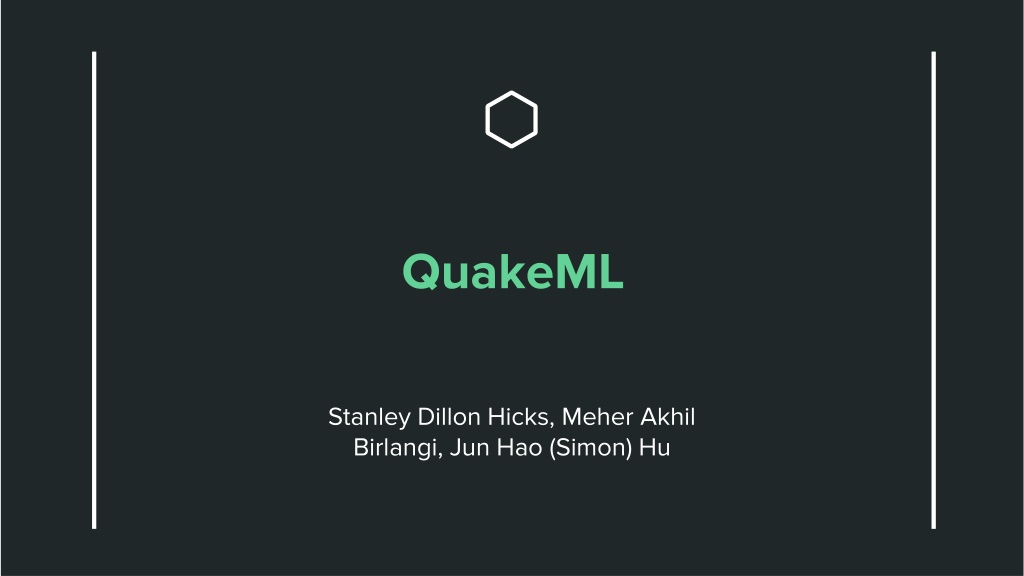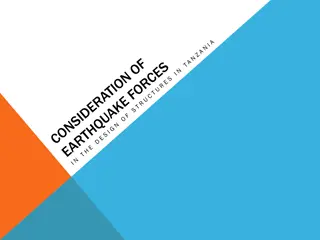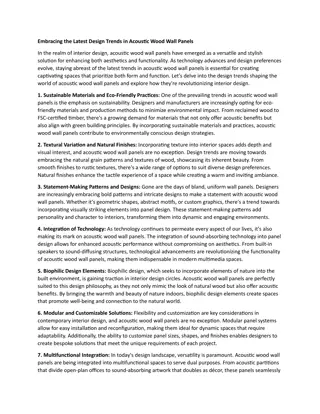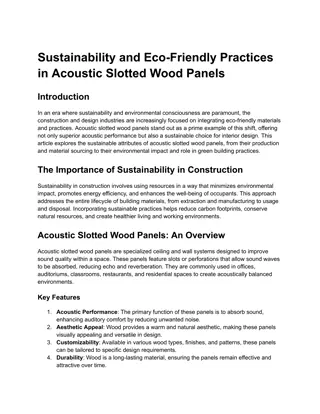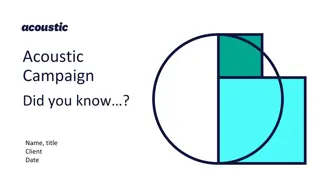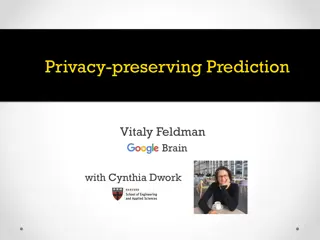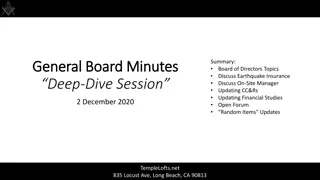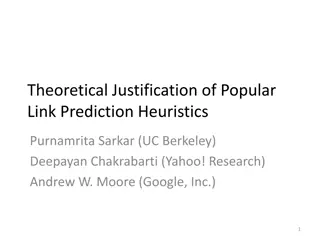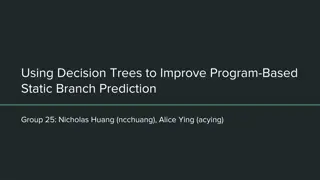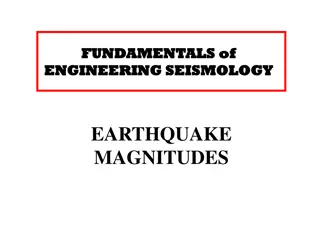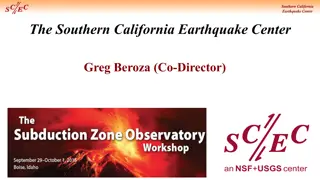Earthquake Prediction Using Acoustic Data
Earthquakes can have devastating impacts, both in terms of financial losses and loss of life. Predicting earthquakes using seismographic acoustic data can help mitigate these impacts by enabling timely response systems. This research explores utilizing machine learning models to predict time-to-failure based on features extracted from acoustic signals. The dataset used includes acoustic data from laboratory earthquakes recorded with a piezoceramic sensor. Denoising techniques are also considered to improve the accuracy of earthquake predictions.
Download Presentation

Please find below an Image/Link to download the presentation.
The content on the website is provided AS IS for your information and personal use only. It may not be sold, licensed, or shared on other websites without obtaining consent from the author.If you encounter any issues during the download, it is possible that the publisher has removed the file from their server.
You are allowed to download the files provided on this website for personal or commercial use, subject to the condition that they are used lawfully. All files are the property of their respective owners.
The content on the website is provided AS IS for your information and personal use only. It may not be sold, licensed, or shared on other websites without obtaining consent from the author.
E N D
Presentation Transcript
QuakeML Stanley Dillon Hicks, Meher Akhil Birlangi, Jun Hao (Simon) Hu
Background Earthquakes can cause billions of dollars in damage and cause large losses of life Earthquakes also devastate local infrastructure and in rare and unfortunate cases can cause land to be uninhabitable (Fukushima) Thus, it is desirable to be able to predict when Earthquakes occur, and prepare for them.
Background Predicting earthquakes from seismographic acoustic data can allow for just-in-time systems to react and mitigate damage in the crucial seconds before an earthquake strikes The LANL Dataset provides acoustic data that can be used to predict earthquakes
Main Reference: Leduc, Hulbert, et al. Los Alamos National Laboratory (LANL) Simulated earthquakes in the lab and measured acoustic signal and time-to- failure. Used a Random Forests model to predict time-to-failure. Features used: Variance of acoustic signal Kurtosis of acoustic signal (skewness of the distribution) Mean of acoustic signal, rolling window (100, 1000, 10000).
How Machine Learning Can Be Applied The real world physical model for earthquakes is incomplete Modern machine learning methods show lots of promise on time series data Models with fast inference times may provide actionable data faster
Dataset Details Dataset: LANL Earthquake Prediction (Kaggle) Acoustic Data Time to Failure Acoustic Data of laboratory earthquakes recorded from a piezoceramic sensor 4194 Segments containing 150,000 samples recorded at 4MHZ Time until next laboratory earthquake for each segment, based on a measure of fault strength
Denoising From reviewing background on Earthquakes, signals should resemble a series of oscillations, followed by a large spike indicative of a shake. Also from Leduc, Hulbert, et al. the collected data was collected using a piezoceramic sensor and not generated using a physical model (e.g. second- order hyperbolic partial differential equation) so it will be subject to noise. Also just qualitatively listening to the acoustic signal, it sounds noisy! We are interested if denoising helps get better results!
Denoising Classical Statistical methods Kalman Filtering (but you need to know the noise model) MAP Estimation (you need some sort of model for the data) Sparse Recovery (relatively hard to implement and could be non-convex) Deep Learning Methods Linear autoencoders Treat acoustic signal as one long vector. Convolutional autoencoders Compute the spectrogram and feed that into a convolutional autoencoder. Wavelet Methods Recent and very popular and perform well against Kalman filtering when dealing with non- Gaussian noise. High-pass, low-pass, band-pass filters.
Denoising Four approaches. For each approach, the large acoustic data is broken into smaller segments of length 784. Classical high-pass filter Use a 5th or 7th order butterworth filter to remove the low frequency components. Wavelet Using a Daubechies wavelet. Wavelet + high-pass filter First the signal is filtered through a high-pass filter, then a wavelet filter using Haar wavelets. Linear Autoencoder 300 -> 200 -> 100 -> 200 -> 300 -> 784 Dense layers. 30% Dropout at each hidden layer. Leaky ReLU activation for each hidden layer.
Feature Extraction Features were extracted on a segment by segment basis, general segment statistics and statistics based on a rolling window for each segment ex. Across windows of 10,100, and 1000 timestep windows, similar to paper [ref] Statistics for acoustic signals at the start and end of each segment Linear Detrending of signals Individual features were then standardized after being generated 54 features in total generated
Model Details Initially based off of prior work results we began by fitting a Random Forest model to the data. Estimator hyperparameter was selected using Randomized Search Final Parameters N_estimators = 1600
Model Details As an improvement to Random Forest, we will use XGBoost, which improves on Random forest through Gradient Boosting and allowing for very efficient training and inference Hyperparameters were selected through a Random Hyperparameter search with a stratified 5- Fold Cross Validation Final Parameters: Max Depth = 9 Min Child Weight = 6 Subsampling = 0.9 Subsampling By Tree = 0.8
Results/Observations - Random Forest Mean MAE: 3.8460411489774327
Results/Observations - XGBoost With a 5-Fold Cross Validation: Mean Validation MAE of 2.0866
Implement a convolutional autoencoder for denoising using the spectrogram as the input to the network and compare it to linear autoencoder. See the difference between noisy data and denoised data. Future Work
References [1] https://public.lanl.gov/geophysics/geophysics /nonlinear/2017/Rouet-LeducGRL17.pdf [2] https://onlinelibrary.wiley.com/doi/full/10.1111/j. 1365-246X.2007.03650.x [3] https://web.njit.edu/~akansu/PAPERS/ANA- IWS-WAS- ELSEVIER%20PHYSCOM%202010.pdf
